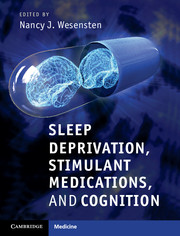
- Cited by 2
-
Cited byCrossref Citations
This Book has been cited by the following publications. This list is generated based on data provided by Crossref.
Van Dongen, Hans P.A. 2015. Sleep Deprivation, Stimulant Medications, and Cognition. Sleep, Vol. 38, Issue. 7, p. 1145.
Stout, Jeremy W Beidel, Deborah C Brush, David and Bowers, Clint 2021. Sleep disturbance and cognitive functioning among firefighters. Journal of Health Psychology, Vol. 26, Issue. 12, p. 2248.
- Publisher:
- Cambridge University Press
- Online publication date:
- September 2012
- Print publication year:
- 2012
- Online ISBN:
- 9780511783005


